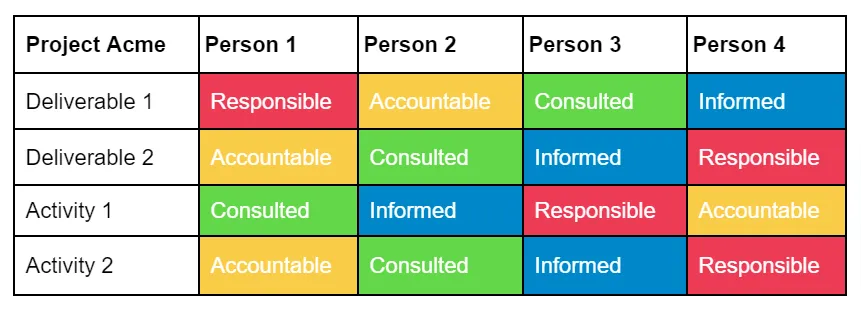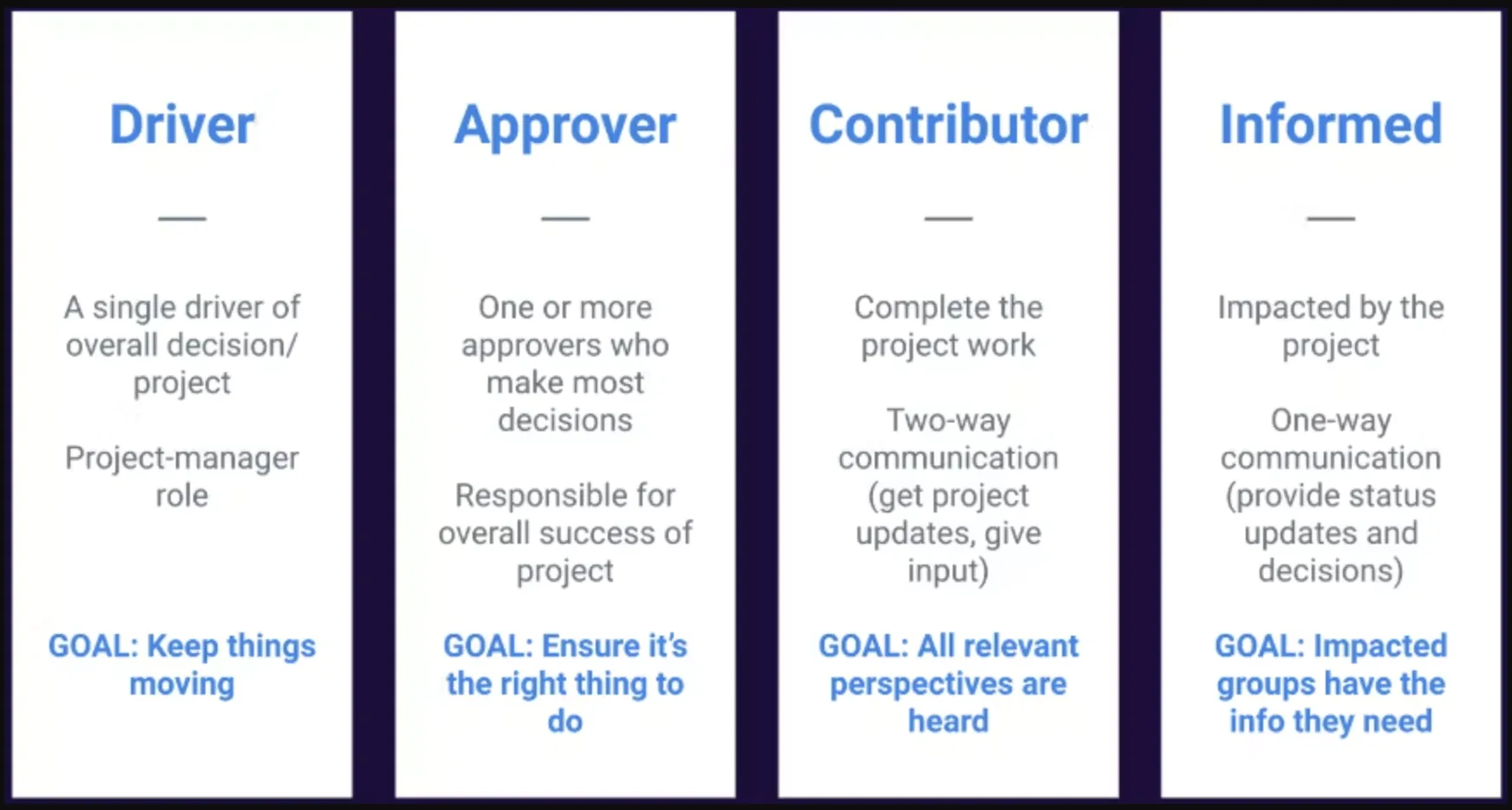RACI vs DACI: how are they different?
In a remote team, it is often difficult to visualize who should do what.
You don’t know them all personally, but you need to understand if they can do their tasks and responsibilities.
No matter the equipment they use and where they are.
Let’s say that you are building a project for your client.
It will take some time, and you will meet other people involved in building your deliverables.
You’ll also need to check if you are going in the right direction.
RACI and DACI are two popular ways of communicating the dynamic nature of teams and team roles.
However, they have some limitations and pitfalls you should be aware of before choosing one.
This Saturday, I want to talk about how these two frameworks can help improve the effectiveness of your projects.
What is RACI?
RACI stands for Responsible, Accountable, Consulted, and Informed.
- Responsible: Who is in charge of the progress?
- Accountable: Who will you rely on for the work?
- Consulted: Who will need to give input on progress and deliverables?
- Informed: Who is directly involved but should receive updates?
It’s a simple communication tool to visualize who is responsible for each task in your project or team.

Even if you don’t know this model, there are high chances you are already using it every day.
If you are familiar with the most common Project management tools, you can see that RACI is the framework that guides the UX and UI.
Let’s make a real example by taking a look at a Trello card:
- Responsible + Accountable: Members of the card
- Consulted: People tagged in the comments/description
- Informed: Viewer

What is DACI?
DACI stands for Driver, Approver, Contributor, and Informed.
It’s a tool that helps companies to identify the key people responsible for delivering results.
- Driver: Who will guide the team toward a decision?
- Approver: Who has the final say?
- Contributor: Who is involved in the work?
- Informed: Who isn’t directly involved but should receive updates?

Why is it important?
RACI and DACI are essential to communicate responsibility and authority in your organization.
- RACI helps you communicate who is responsible for what;
- DACI enables you to express who is authorized to do what.
RACI vs. DACI – how are they different?
RACI is a simple and easy-to-understand matrix that you can use in many situations. It’s beneficial for managing low-level tasks.
DACI is more detailed and beneficial in more complex situations. In particular, it is more suitable to manage strategic goals (at a higher level than RACI)
Let’s give a couple of real examples:
- TASK 1: Launch the new issue of the Voxloud Newsletter
- Level: Low (execution)
- Framework: RACI
- Responsible: Marketing Manager
- Accountable: Copywriter, Designer
- Consulted: Sales manager and readers (to scout exciting topics)
- Informed: CEO
- TASK 2: 2023 Voxloud Product Roadmap
- Level: High (strategic)
- Framework: DACI
- Driver: CTO
- Approver: CEO
- Contributor: Internal team, Customers
- Informed: Customers
RACI vs DACI
RACI and DACI are great ways to communicate the dynamic nature of teams and team roles.
But you should be aware of their limitation and pitfalls.
- RACI is an excellent tool when assigning roles and responsibilities to a team. Still, it may not be ideal for highly dynamic projects, such as innovation projects or large-scale initiatives. It’s because they require coordination across multiple groups.
- DACI can be used effectively by both project managers and non-project managers. It allows seeing all roles at once for more complex and high-level topics.
Comparing RACI to DACI makes no sense if you are looking for which of the two is better.
They are both valuable frameworks depending on the context.
Use both at the right moment to ensure clear and compelling results.
About the Newsletter
1 actionable tip on remote management in your inbox every Saturday morning.
Subscribe